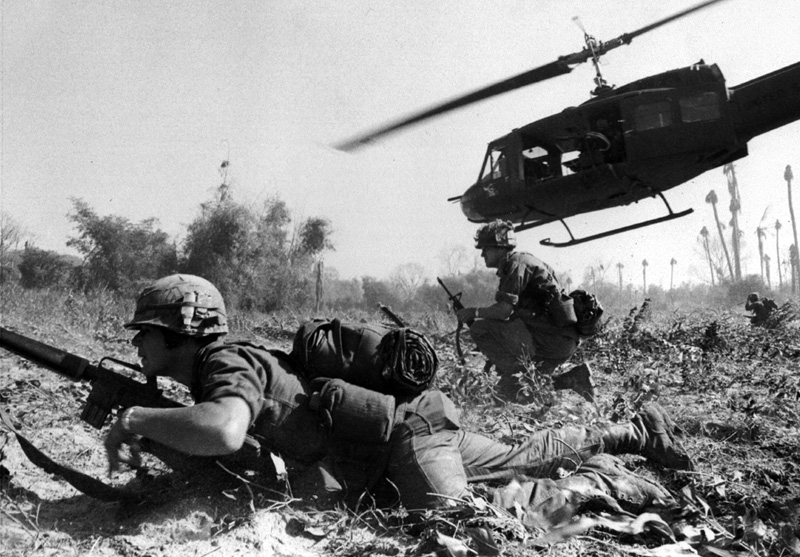This will be a short post (unless I get longwinded). I didn’t intend to write today after I wrote a Memorial Day piece earlier this week, but I mentioned in that article that I was reading “We Were Soldiers Once… and Young,” the inspiration for the movie “We Were Soldiers.” I haven’t quite finished the book, but there were a few stories there that seemed appropriate to pass along on Memorial Day.
In several cases, the stories of American survivors of the North Vietnamese ambush of the second battalion of the Seventh Cavalry in Vietnam’s Ia Drang in 1965 seem too farfetched to be real. For example, Specialist Jack Smith was wounded and then played dead as the NVA advanced. A North Vietnamese machine gunner used what he thought was Smith’s dead body as a sandbag for cover. Smith was left with the unenvious choice of getting up and being shot by the NVA or staying still while his own comrades shot at the NVA soldier hiding behind him. Ultimately, the NVA soldier was killed but Smith survived.
Another American survivor, Sergeant James Mullartey, also played dead after being wounded. As the NVA walked the battlefield, executing American survivors, one of the Vietnamese stuck a pistol into Mullartey’s mouth and fired. The bullet exited Mullartey’s throat and knocked him unconscious but failed to kill him. When he awoke, he crawled through the jungle to American lines.
Another survivor, who was not identified in the book, had a similar story. This soldier was wounded in the legs and had been burned by napalm that was dropped on the NVA and Americans alike due to the lack of identifiable lines. The North Vietnamese intended to execute this soldier and fired a pistol point-blank into his eye. The bullet blinded him, but he survived to be evacuated.
You won’t find stories like these in war movies because no one would believe them. They really happened in November 1965, however.
Sadly, many other Americans were not so lucky. Many who initially survived the attack were executed by the NVA on the battlefield. Some American bodies were found with hands tied behind their backs and bullet wounds to the back of the head.
One of the other things that struck me was that at least two of the dead from the Ia Drang battle seem to have been recent immigrants. One of the new widows was a young, “very pregnant” Hispanic woman who was the wife of a trooper of the first battalion. The woman and her husband are not mentioned by name, but the implication is that they were recent immigrants because the soldier’s wife could not speak or read English.
Another immigrant who is mentioned by name is Sergeant Lloyd Joel Monsewicz, who brought his family to the US from France about five years before he shipped out to Vietnam. Monsewicz’s wife was still learning English when he died in Ia Drang.
Immigrant soldiers are a relatively unknown part of American history, but no small number of American soldiers who have fought and sometimes died for the United States were not Americans at all. For example, Revolutionary War heroes such as the Marquis de Lafayette and Baron von Steuben immigrated to aid the colonial army and Irish immigrants were commonly recruited into the Union army during the Civil War. Mexican immigrants were part of US military ranks in both WWII and the War on Terror. The AP reports that about 38,000 noncitizen soldiers were in the US military at the time of the US invasion of Iraq. One of these, Marine Lance Cpl. Jose Gutierrez, 22, was an illegal immigrant from Guatemala and one of the first to die in the Iraq War.
You don’t have to be a citizen to love America and to die fighting for the American dream. In my opinion, immigrants who serve honorably in the US military have earned citizenship. Those who die for America deserve to have citizenship extended posthumously, as it was to Lance Cpl. Gutierrez.
Follow David Thornton on Twitter (@captainkudzu) and Facebook
The First TV contributor network is a place for vibrant thought and ideas. Opinions expressed here do not necessarily reflect those of The First or The First TV. We want to foster dialogue, create conversation, and debate ideas. See something you like or don’t like? Reach out to the author or to us at ideas@thefirsttv.com.

